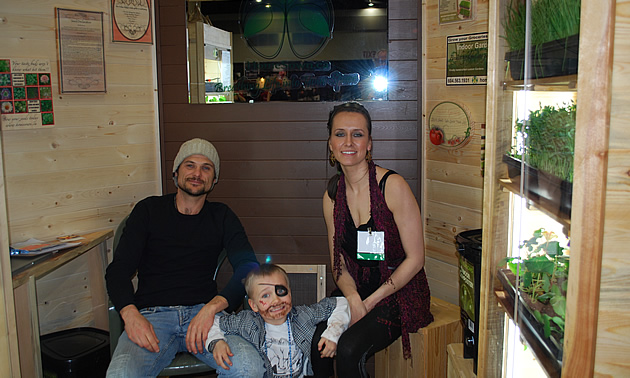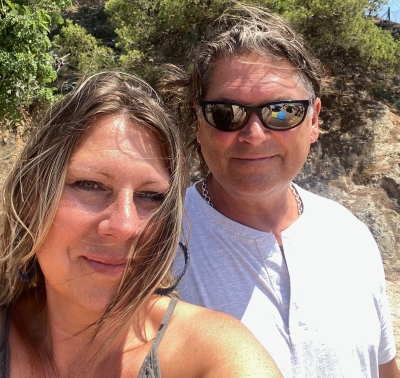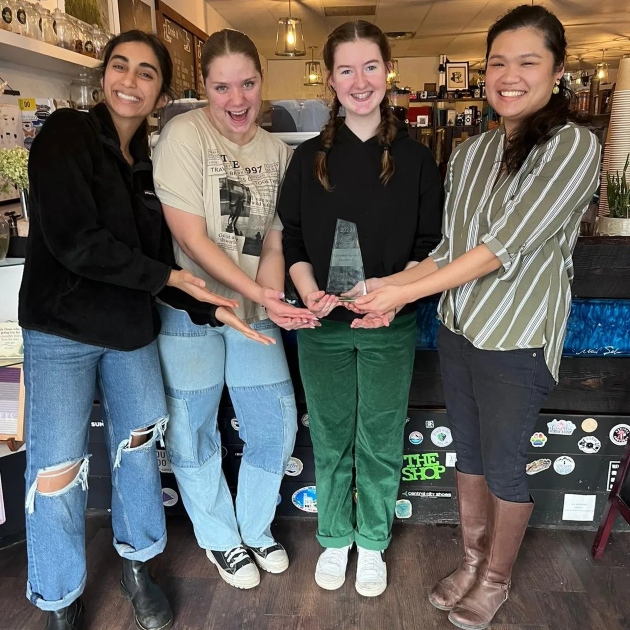Death gives life to new venture
Mark Zeabin expressed great sadness when his lifelong casket-building business died in 2008, but he bounced back

Mark Zeabin and Elysia Samarodin exhibited Homesown products at a trade show in BC Place called Epic: the Sustainable Living Expo last April. — Photo courtesy Mark Zeabin
Mark Zeabin was the beloved owner of a coffin manufacturing company for roughly 12 years, and after the loss of his long-term source of income he left Castlegar with his girlfriend, Elysia Samarodin, for the city of Vancouver. Samarodin planned to attend school for one year and Zeabin began searching for a new passion.
The coffin manufacturing company that he had previously owned focused on designing "coffin furniture"— essentially his products could be used as furniture and then as a coffin afterwards. The practicality of that business venture inspired him to segue into another unique project—growing gardens inside caskets.
“I went straight from death into life and I started this garden business,” said Zeabin. “The first one was supposed to be a combination coffin garden—that’s kind of where the idea started. You could use your furniture as the ultimate—basically grow sprouts, herbs and small, fresh vegetables all year round.”
Zeabin describes the coffin garden concept as the ultimate gag—people could eat healthy foods from a coffin garden or face their fate.
“It’s pretty cool,” said Zeabin. “But the coffin garden is more of a conversation item . . . So I took the coffin out of it and (also) started building regular indoor garden appliances.”
The benefits of inside gardening
Zeabin was initially inspired to start the business after living in a small Vancouver condo with Samarodin. He began to miss aspects of life in the Kootenays and realized that many people in the city also wanted to grow gardens but didn’t have the space to do it.
Zeabin believes that a lack of space outside shouldn’t prevent people from having gardens or leading healthy lifestyles. He noticed that many people experience problems growing seedlings on windowsills or in areas with a short growing climate because the plants can freeze and die. By contrast, growing a garden inside with the proper equipment has a number of advantages.
“It’s simply a unit where you can grow your own greens all year round and get good, healthy food,” said Zeabin. “It’s a really kind piece of furniture. I use reclaimed wood in a lot of (cases), or sustainable wood at the very least. I build them myself and they don’t use too much power—it’s only about $50 a year for the big unit. So it’s very energy efficient.”
The indoor garden units can be purchased with or without a coffin, and they are equipped with full-spectrum lights, an air-circulation system and an optional water system for irrigation. Zeabin compares the garden units to kitchen furniture—the sizes range from a fridge to a dishwasher, and they can be as small as a microwave.
For more information about Homesown, visit the Homesown website.





Comments